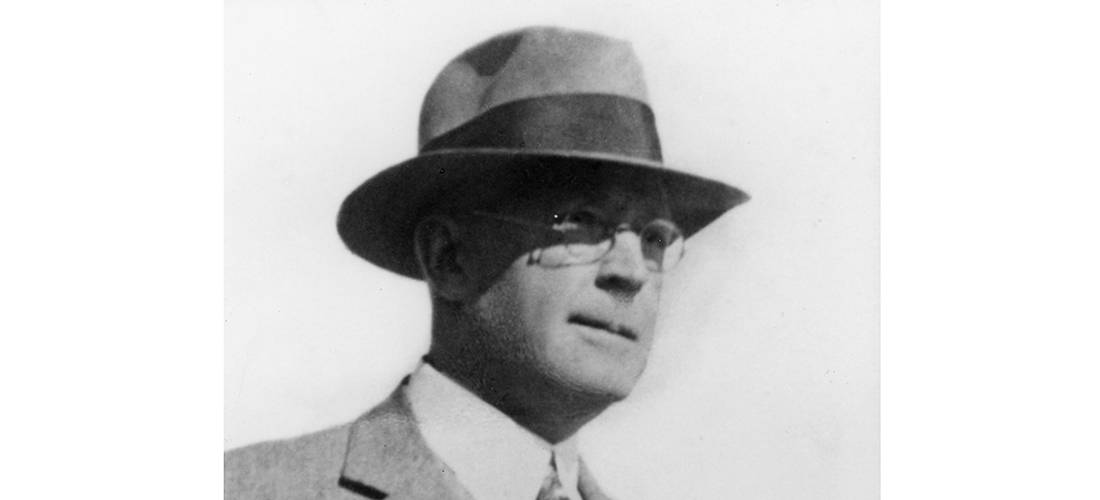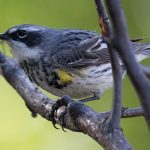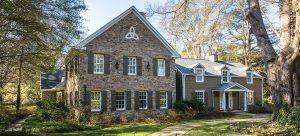
Remembering Donald Ross’ greatest rival
By Lee Pace
Golfers in these parts speak of Donald Ross as if he’s a next-door neighbor or first cousin. And why not? Just a few generations ago, he was building seven golf courses in Moore County, running the Pine Crest Inn and hopping the nearest train to head south to Palm Beach or north to Rochester to lay out another showpiece. In North Carolina alone, you can’t sling a 7-iron without landing on a Ross design.
That said and his immense talents acknowledged, how fun might it have been for the golf world if Ross, who designed an estimated 385 courses over nearly half a century, had had to compete mano a mano with another architect with a similar background in agronomy and construction?
Someone like Seth Raynor, for example?
In 1923, officers at the Country Club of Charleston were moving their course from a site north of the city to a new location on James Island, just across the Ashley River from the Battery. They retained Olmsted Brothers landscape designers, the second-generation offshoot from the esteemed Frederick Law Olmsted, to develop a master plan, and one letter from Olmsted staff to club leadership read as follows:
“Suggestions. (1) Golf Architect: Ross best known so his name probably has best advertising value. Raynor or some other good architect (Strong) probably easier to get when you want him and fees perhaps a little less.”
Raynor got the job there and another concurrent assignment at a new course being planned a dozen miles inland, Yeamans Hall Club. He designed both concurrently, and the Country Club course opened in May 1925 and Yeamans Hall in November.
Ross was prolific designing courses in the mid-to-late 1920s during stout economic times. But so was Raynor. His schedule in early 1926 was reflective of his popularity and the innate desire of any industrious businessman to take on as much work as reasonable.
Raynor’s first trip in early 1926 took him from his home on Long Island west to California by train. From there he took a boat to and from the island of Hawaii, then journeyed back across the nation by train to Florida. Under construction amid the palm trees of Oahu was Waialae Country Club, and within the dense forests of the California coast was the Dunes Course at Monterey Peninsula Country Club. There was a new venture at Monterey to plan for as well — an elite club to be known as Cypress Point. Raynor had been approached for the job through his Eastern connections with Marion Hollins, the 1921 U.S. Women’s Amateur champion who was tapped by Cypress Point founder Samuel Morse to help plan and develop the club. In Florida, Raynor had already designed and built nine holes at the Everglades Club for Paris Singer, the heir to the sewing machine fortune, and his visit in early 1926 would be to fine-tune a new 18-hole layout for Singer to be known as North Palm Beach Country Club (it now exists as a Jack Nicklaus-signature course with no remnants of Raynor’s work).
The intense physical toll manifested itself on the train trip east when Raynor developed fever, coughing and chills — he had contracted pneumonia. He checked into the Helen Wilkes Resident Hotel in Palm Beach and died on Jan. 22, 1926. He was 51 years old.
“It was too much travel, too much work, too little relaxation,” one of his relatives later lamented.
One obituary notice in his hometown paper in Suffolk County, N.Y., was brief but lauded Raynor for his place in golf. “Mr. Raynor was internationally known for his genius in laying out golf courses and overcoming engineering obstacles in his work.”
And this from a tribute in the Metropolitan Golfer written by Gould Martin:
“It is the irony of life that every once in a while one who has risen to the very top of his chosen profession passes away from this existence with almost no contemporary notice. Seth J. Raynor was not only at the top of his profession but he was an artist, indeed a genius as well.”
And to think: Raynor developed these skills and nuances in a sport he didn’t play as a child and never even remotely mastered as an adult. He claimed that if he played too much golf, his courses would become too easy. He felt the ideal links should not come down to the playing level of a poor golfer.
Raynor actually worked less than two full decades in golf course design and construction, roughly half that time as an associate of Charles Blair Macdonald and the rest under his own shingle. He’s credited with nearly 50 designs by Ron Whitten and Geoffrey Cornish in their book The Golf Course, and four of his courses are listed in the Golf Digest Top 100 rankings for 2017-18 — Fishers Island, Camargo, Shore Acres and Yeamans Hall, as is one he was intimately involved in building for Macdonald, National Golf Links, and another he remodeled years later, Chicago Golf Club.
Macdonald in 1906 decried the lack of sophisticated golf venues in the States, saying, “As yet we have no first-class golf course comparable with the classic golf courses in Great Britain and Ireland.” He proposed to solve the problem himself by buying land on the eastern extreme of Long Island and building a links-style course that would become the National Golf Links of America. Macdonald knew golf and he knew great holes. But he didn’t know construction, drainage, agronomy or greenkeeping.
“It was imperative I secure an associate, one well-educated with wide engineering capabilities, including surveying, companionable, with a fine sense of humor, but above all, earnest and ideally honorable. Such a man I found in Seth J. Raynor,” Macdonald said of retaining Raynor in 1907 to survey the site for his new course.
Raynor was born in Manorville, N.Y., and studied engineering at Princeton. He worked for himself as a land surveyor and landscaper in Southampton when Macdonald brought him into the National project — first to survey the land and then with an invitation to supervise construction once Macdonald learned of Raynor’s skills and meticulous work ethic.
“He scarcely knew a golf ball from a tennis ball when we first met,” Macdonald said, “and although he never became much of an expert in playing golf, the facility with which he absorbed the feeling which animates old and enthusiastic golfers to the manner born was truly amazing, eventually qualifying him to discriminate between a really fine hole and an indifferent one.”
Macdonald’s goal with the National was to help expose Americans to a quality golf experience like they would find overseas, and one of his ideas was to take the concepts for the well-known holes in Britain and adapt and tweak them for particular sites in the States. They became known as “template holes,” and Raynor would carry on the philosophy when he hung his own shingle in 1915 after Macdonald retired. Among them were the Short, Eden, Redan, Bottle, Sahara, Cape, Alps and many others.
Architect Tom Doak in his foreword to George Bahto’s book The Evangelist of Golf, the Story of Charles Blair McDonald, observed that “playing a course by Raynor or Macdonald is like visiting an old best friend — the familiarity returns almost instantly, even if you have never seen it before!”
Doak wondered if he was a hypocrite for finding it distasteful when modern architects repeat their own work while acknowledging a fondness when Macdonald and Raynor did the same thing. But he noted a distinct difference.
“Macdonald and Raynor were paying homage to a classic form, and at the same time, trying to devise improvements to it based on the local situation,” Doak wrote.
Raynor met with fortuitous timing in spreading his design wings after leaving Macdonald, as the United States was reaping the financial rewards of the Industrial Revolution and enjoying the heady economic times of the Roaring ’20s. Golf was growing in popularity, and Ross was handling a myriad of jobs, including the Pine Needles and Mid Pines projects in Southern Pines. There was plenty of work to go around.
Imagine what Seth Raynor might have accomplished had he not died so young.
“Sad to say he died ere his prime,” Macdonald wrote. “Raynor was a great loss to the community, but a still greater loss to me. I admired him from every point of view.” PS
Chapel Hill-based writer Lee Pace is currently working on a history book for the Country Club of Charleston, set to be released prior to the club hosting the 2019 U.S. Women’s Open.





